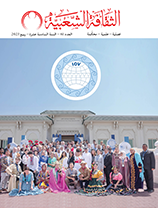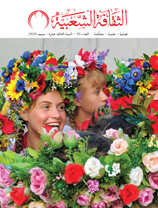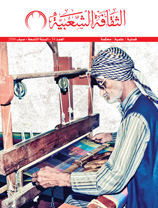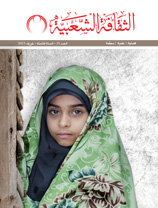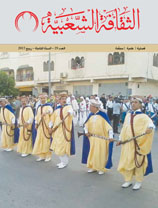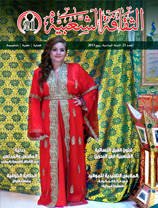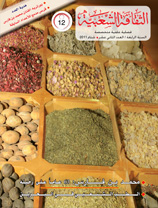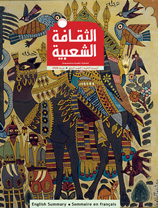Popular Recipes in the Levant Countries
Issue 14

Awad Saud Awad (Syria)
This study aims to explore the impact of geography on popular recipes. Bedouins - sheep and goat-herding desert inhabitants - are famed not for their fish recipes but for their sheep and goat-based dishes.

The Bedouin often slaughter a sheep for their guests, as generosity is valued highly. Some say this is because the hardship of their lifestyle makes the Bedouin dependent on one another, so the idea is that the person they feed today will be ready to offer them food tomorrow.
People who live on the coast rely on the sea for their food and livelihoods, while those who reside in the countryside live on what they grow, so many of their recipes use grains and vegetables. City dwellers rely on other regions to fulfill their needs, because they work primarily in industry.

If we review popular recipes, we will notice that they are dependent on geography, as is the case in the Levant, which has coastal, mountainous, rural and desert environments.
Levantine cuisine varies, but the cities and villages share some recipes because they are close, so rural recipes are popular in the city, and Bedouin cuisine is popular in the countryside. This may be due to the lack of geographical, religious and cultural barriers and due to the fact that many villagers are of Bedouin origin.

Hospitality plays a more prominent role in Bedouin life than it does in urban areas. Both hospitality and generosity are valued highly amongst the Bedouin, and men must be generous if they wish to be respected by society and if they wish to be accepted by women who want husbands of whom they can be proud.
Bedouins usually eat with their hands, especially at weddings and funeral feasts when ‘Mansaf’ is served. The host is expected to encourage guests to eat, sometimes reminding them of proverbs which translate as “The more men eat, the more they accomplish” and “Even those who are sated can have forty bites”.

In rural and urban regions, people use cutlery and invitations are extended to one or a few people, while a whole tribe may be included in an invitation in a Bedouin region.
Cuisine varies by region and social class, as the food of the rich differs from that of the poor in terms of both quantity and quality.











